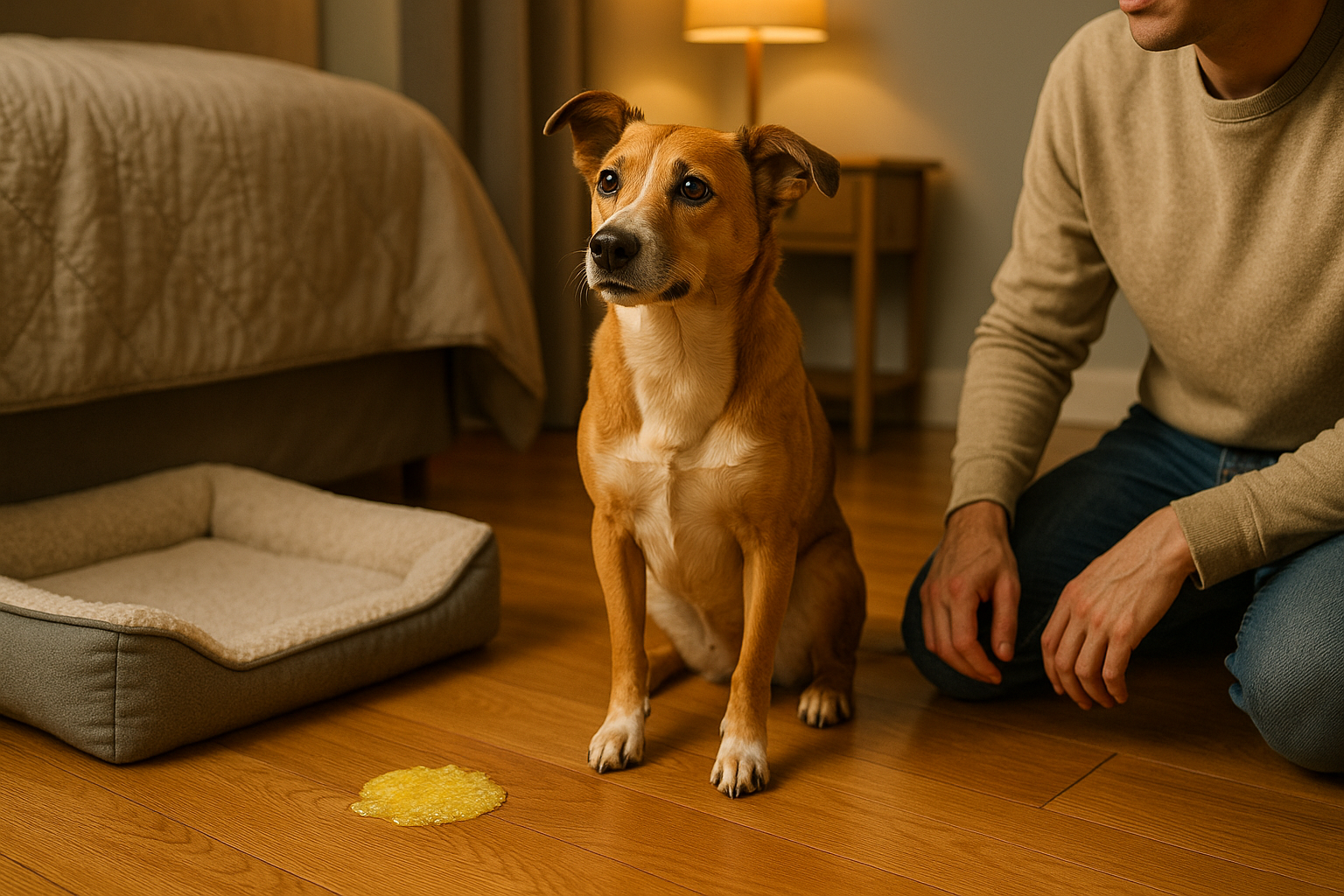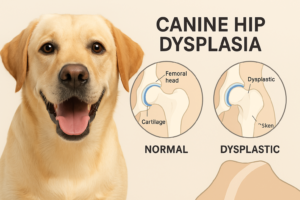Introduction
Waking up to find your dog throwing up yellow foam at night is more than a little unsettling. I’ve had many clients in my Ottawa practice call first thing in the morning, worried their pup’s overnight vomit means something serious. Thankfully, in many cases, especially when the dog seems otherwise bright and alert, it’s due to a manageable condition called bilious vomiting syndrome. But it’s not always benign—sometimes it’s the first clue to deeper issues, from gastritis to pancreatitis.
This guide explains why your dog is throwing up yellow foam at night, what you can try at home, and when you should call your vet. We’ll walk through common causes like bile reflux, delayed stomach emptying, and even how stress or NSAIDs could be to blame. I’ll also share some prevention tips that have worked well for my own patients and include trusted veterinary sources like the Merck Veterinary Manual, WSAVA nutrition guidelines, and Cornell University’s GI care insights.
You’ll find clear red flags that mean it’s time for urgent care—especially if your dog is throwing up yellow foam at night repeatedly or shows signs like blood, belly pain, or lethargy.
Let’s break it down step by step.
Table of Contents
This article offers general guidance for Canadian pet owners. It’s not a substitute for a hands-on veterinary exam. If your dog seems unwell, contact your veterinarian.
✅ Key Takeaways
- When your dog is throwing up yellow foam at night, it’s often bile—an irritating fluid from the small intestine.
- The most common cause is bilious vomiting syndrome, triggered by an empty stomach during overnight fasting.
- Offer a small, low-fat snack before bed and avoid long gaps between meals.
- Watch for red flags like blood, belly pain, lethargy, or repeated vomiting—these need a vet check.
- Underlying issues may include gastritis, parasites, acid reflux, pancreatitis, or systemic disease.
- Your vet may recommend diagnostics like bloodwork, fecal testing, or imaging depending on your dog’s history.
To read more about vomiting follow this link https://doglifeexpert.com/7-proven-causes-of-dog-vomiting-home-care-tips/
What the Yellow Foam Is?
When a dog is throwing up yellow foam at night, what you’re usually seeing is bile. Bile is a yellow-green digestive fluid made by the liver and stored in the gallbladder. It enters the small intestine to help break down fats. If the stomach stays empty for too long, especially overnight, bile can backflow—or reflux—into the stomach.
This irritates the stomach lining, sometimes enough to cause vomiting. When mixed with a bit of stomach fluid and air, bile takes on that characteristic yellow, foamy appearance. According to the Merck Veterinary Manual, bile vomiting is especially common in dogs with long fasting periods or disrupted gastric motility.
It’s important to note: bile in vomit is a symptom, not a diagnosis. The cause depends on what’s triggering the reflux, inflammation, or vomiting reflex.
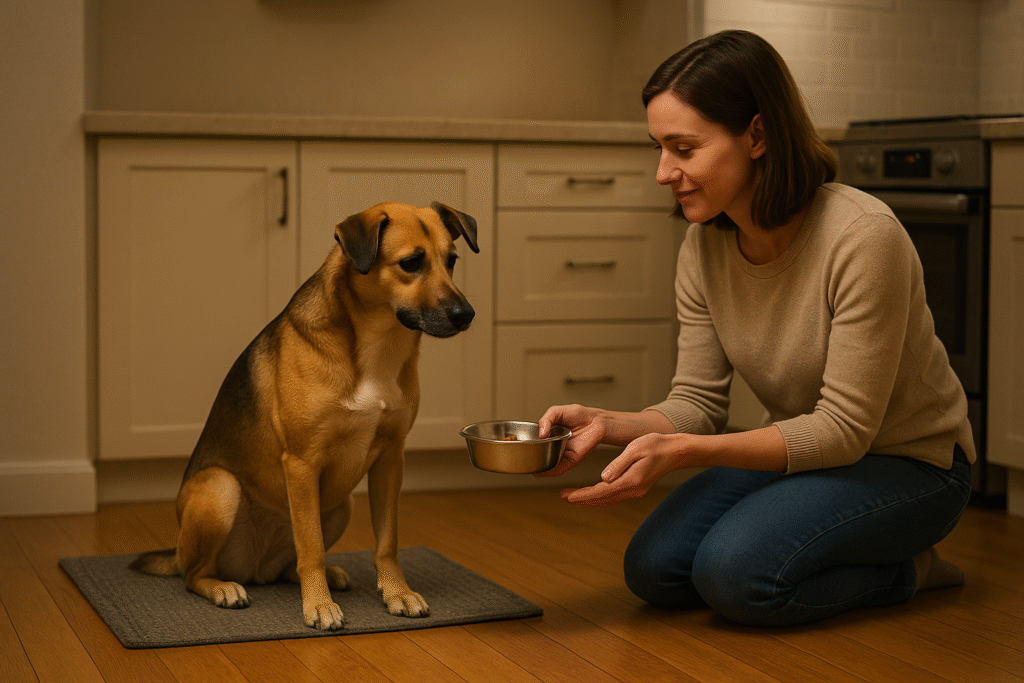
Why is the dog throwing up Yellow Foam at Night
If your dog is throwing up yellow foam at night, timing often holds the biggest clue. Most dogs go the longest without food between dinner and breakfast. During this fast, the stomach empties completely, and bile can trickle backward into it from the small intestine. This process is called duodenogastric reflux.
If the stomach stays empty for too long, especially in dogs with sensitive digestion or delayed gastric emptying, bile builds up and irritates the stomach lining. By the early morning hours, that irritation may trigger vomiting—even if your dog otherwise seems fine. This is the classic pattern seen in bilious vomiting syndrome, as described in Canine and Feline Gastroenterology (Washabau & Day, 2012).
Nighttime bile vomiting can also become a habit if your dog is prone to anxiety, gastrointestinal sensitivity, or eats a high-fat dinner that lingers in the stomach. Even stress or late-night activity can influence gut motility and acid balance, increasing the chance of bile vomiting.
So if your dog keeps throwing up yellow foam at night, think: empty stomach, slow digestion, or bile irritation.
Common Causes
If your dog is throwing up yellow foam at night, several underlying issues could be at play. Some are mild and dietary; others may require vet-guided diagnosis and treatment.
1. Bilious Vomiting Syndrome (BVS)
This is the most common cause when the dog seems otherwise bright and healthy. Long gaps between meals allow bile to collect and irritate the stomach. WSAVA guidelines recommend feeding strategies as a first step for mild BVS cases.
2. Dietary Triggers & Gastritis
Dogs who sneak garbage, switch foods too quickly, or get rich table scraps may develop gastritis. This can cause nighttime vomiting—especially of bile—when the stomach tries to “clear” the irritants. I’ve seen this pattern many times in food-motivated Labrador retrievers after a weekend of indulgence.
3. Acid Reflux or Delayed Gastric Emptying
Some dogs, especially small breeds and older pets, are prone to gastroesophageal reflux or slow stomach emptying. According to Cornell University’s GI Disorders Resources, this can cause bile pooling and vomiting during the quiet hours of the night.
4. Pancreatitis & Inflammatory GI Conditions
If your dog vomits yellow foam at night and also seems lethargic, painful, or won’t eat, pancreatitis or IBD may be to blame. These require prompt veterinary care and usually show up with additional signs like diarrhea or abdominal discomfort.
5. Infections, Parasites & Systemic Illness
Parasites (like Giardia), GI infections, and metabolic conditions (kidney disease, Addison’s disease) can also present with bile vomiting. Bloodwork and fecal testing are often needed for diagnosis.
6. Medication Irritation
NSAIDs, antibiotics, and even some supplements can irritate the stomach lining, especially when given on an empty stomach. If your dog is throwing up yellow foam at night and is on medication, talk to your vet.
7. Mimics: Coughing Up Foam
Dogs with collapsing trachea or kennel cough may cough up foam that looks like vomit. If your dog is gagging or retching before expelling foam, your vet may consider respiratory causes.
What You Can Try at Home for a Bright, Comfortable Dog
If your dog is throwing up yellow foam at night but seems otherwise happy, playful, and eating normally, there are a few safe things you can try at home. These steps are especially helpful in mild cases of bilious vomiting syndrome, as noted in WSAVA’s nutrition guidelines.
- Adjust feeding times: Move your dog’s dinner an hour or two later and add a small, low-fat bedtime snack—something like a tablespoon of boiled chicken with rice or a few kibbles of gastrointestinal diet.
- Small, frequent meals: Feed 3–4 smaller meals per day instead of one or two large ones. This helps prevent long fasting periods that promote bile buildup.
- Ensure water access at all times: After vomiting, let your dog rest and offer small sips of water every 20–30 minutes to avoid dehydration.
- Temporary bland diet: If vomiting has only happened once and your vet has previously okayed bland diet use, feed plain boiled chicken and white rice for 24–48 hours. Don’t use this method long-term without guidance.
- Cut out new treats or rich snacks: If your dog is throwing up yellow foam at night and you’ve recently added new chews or table food, stop all extras for now. Reintroduce slowly after symptoms resolve.
These strategies often work within a few days if the dog is otherwise healthy. But if vomiting repeats—even just once daily—or your dog acts off in any way, call your vet.
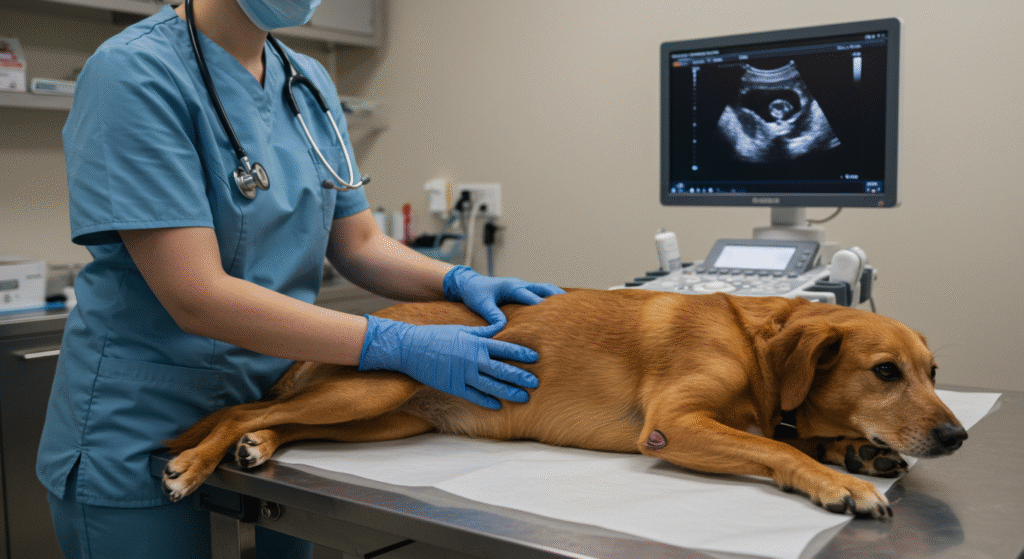
Red Flags That Need a Vet Visit Now
If your dog is throwing up yellow foam at night and any of the signs below are also present, it’s time to call your vet or a 24-hour clinic. These symptoms may point to something more serious than simple bile reflux.
- Repeated vomiting (more than 2–3 times in 24 hours), especially if your dog can’t keep food or water down.
- Blood in the vomit (bright red or coffee-ground appearance) or black stool, which may suggest internal bleeding.
- Lethargy, fever, or abdominal pain—signs your dog is truly unwell and possibly dealing with a deeper GI or systemic issue.
- Bloating or a distended abdomen, especially in large breeds, as this can signal gastric dilatation-volvulus (GDV), a surgical emergency.
- Known dietary indiscretion, such as ingesting a toy, bone, trash, or human medications.
- At-risk dogs: Puppies, seniors, diabetic pets, or dogs on long-term meds (especially NSAIDs) are more vulnerable to complications.
As I tell my clients, a single episode of bile vomit in an otherwise bright dog may not be urgent—but if your dog is throwing up yellow foam at night repeatedly or showing any distress, don’t wait it out.
What Your Vet May Do
When a dog is throwing up yellow foam at night persistently or shows red flags, your veterinarian will work through a diagnostic plan based on clinical signs, history, and exam findings.
Here’s what a typical workup might include:
- Physical exam: Your vet will palpate the abdomen, check for pain, dehydration, and evaluate for signs of systemic illness. Timing, diet, medications, and pattern of vomiting all guide next steps.
- Fecal test: To rule out parasites like Giardia, which can cause intermittent vomiting and diarrhea.
- Bloodwork: A complete blood count and biochemistry panel can detect inflammation, liver or kidney dysfunction, pancreatitis, and electrolyte imbalances.
- Pancreatic lipase test: Helps screen for pancreatitis, especially if there’s abdominal pain or recent fatty food exposure.
- Imaging: X-rays or ultrasound may be ordered if a foreign body, obstruction, or organ abnormality is suspected. According to Merck Veterinary Manual, ultrasound is especially helpful in chronic vomiting or suspected IBD.
- Treatment: Depending on the findings, your dog may receive anti-nausea meds (like maropitant), stomach protectants, acid reducers, subcutaneous or IV fluids, and a low-fat gastrointestinal diet. Long-term plans might include diet changes, acid-control meds, or treating underlying conditions like reflux or IBD.
Your vet may also advise splitting meals and adjusting the timing if bilious vomiting syndrome is suspected. Always follow professional guidance before making long-term dietary or medication changes.
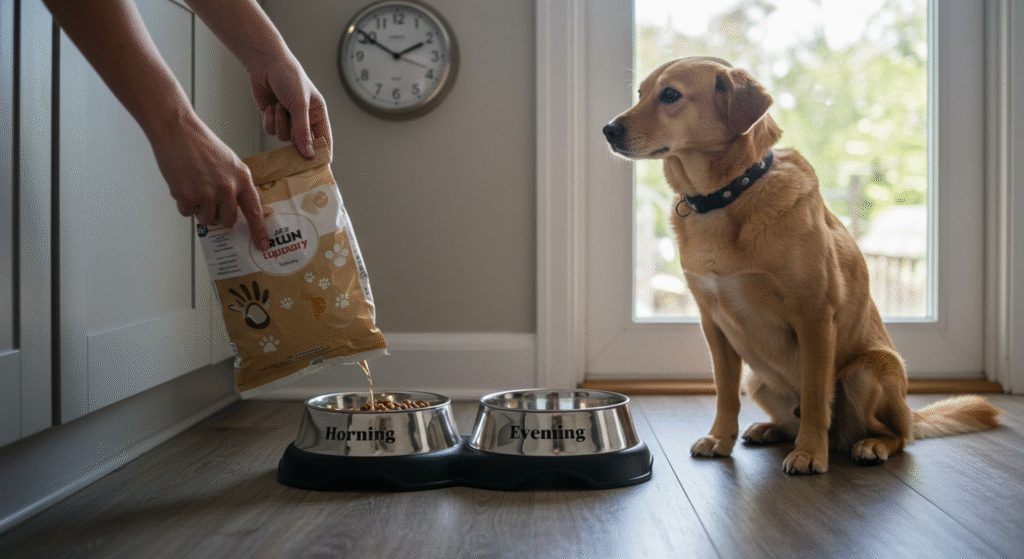
Prevention Tips
If your dog is throwing up yellow foam at night on and off, prevention often comes down to thoughtful feeding habits and gastrointestinal support. Here’s what I recommend for many of my own patients with bile-related vomiting:
- Avoid long fasting periods: Keep gaps between meals under 10–12 hours. Add a light, low-fat snack before bedtime to help buffer bile.
- Choose a highly digestible, moderate-fat diet: Sensitive dogs benefit from foods that are easy on the stomach. Veterinary GI diets like Royal Canin Gastrointestinal Low Fat or Hill’s i/d Low Fat are often used for chronic cases.
- Use slow transitions when changing foods: Mix new food gradually over 7–10 days to avoid gastric upset that could contribute to nighttime vomiting.
- Keep garbage, bones, and rich table scraps off-limits: Many cases of vomiting—especially bile vomiting—start with a weekend dietary indiscretion.
- Stay current on parasite prevention: Regular deworming, especially for dogs who go to parks or have access to contaminated areas, helps reduce risk of infections that mimic BVS.
- Reduce stress and promote calm evenings: A stable routine supports gut motility. If your dog throws up yellow foam at night mostly after disruption or travel, stress could be contributing.
I also advise clients to keep a vomiting log. Track time, colour, what was eaten, and any other symptoms. Patterns often emerge—and help us narrow down what’s going on.
Quick FAQ
Is yellow foam always bile?
Usually, yes. When your dog is throwing up yellow foam at night, it’s most likely bile mixed with stomach fluids. The yellow or greenish tinge comes from bile pigments.
What is bilious vomiting syndrome in dogs?
It’s a mild but recurring condition where dogs vomit bile—often at night or early morning—after long gaps between meals. A bedtime snack and adjusted feeding schedule often help.
Should I feed my dog after they vomit yellow foam?
If your dog seems otherwise normal, offer a small amount of water first. After 1–2 hours without more vomiting, you can try a bland meal. But if your dog throws up yellow foam at night again or seems unwell, call your vet.
Can stress cause nighttime bile vomiting?
Yes. Stress, travel, or changes in routine can slow gastric emptying and worsen reflux. Keep feeding times, activity, and sleep patterns as predictable as possible.
When is it an emergency?
If your dog throws up yellow foam at night more than once in 24 hours, or shows signs like pain, blood, collapse, or known toxin ingestion, get urgent veterinary care.

